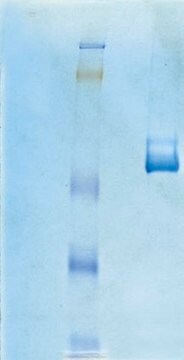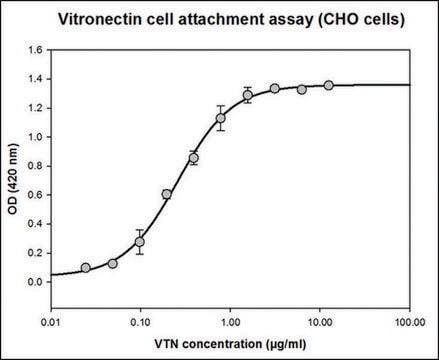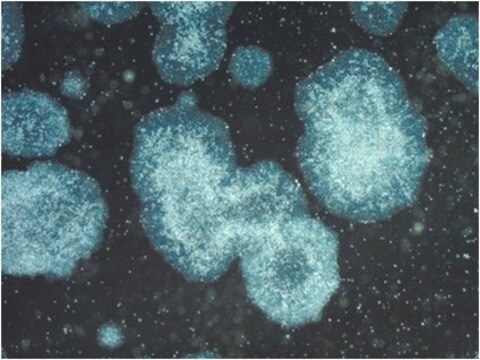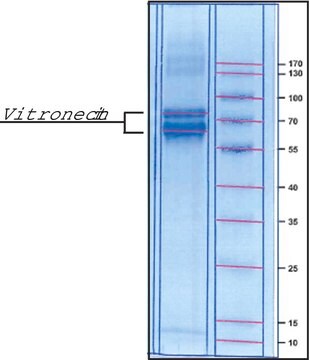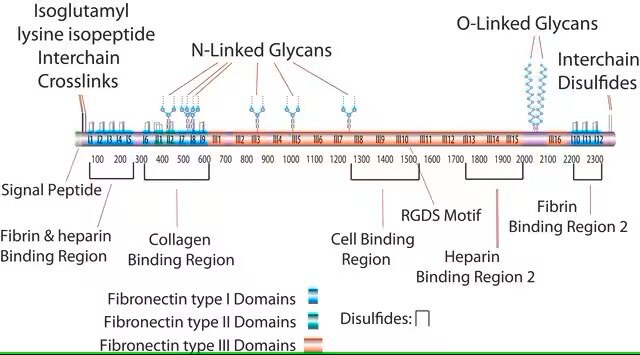5051
Human Vitronectin
from human plasma, liquid, 0.5 mg/mL, suitable for cell culture
Sinonimo/i:
Cell adhesion protein, ECM protein
About This Item
Prodotti consigliati
product name
Vitronectin, from human plasma, suitable for cell culture, solution
Origine biologica
human plasma
Livello qualitativo
Sterilità
sterile-filtered
Saggio
>95%
Forma fisica
solution
PM
75 kDa
Confezionamento
pkg of 0.1 mg
Concentrazione
0.5 mg/mL
tecniche
cell culture | mammalian: suitable
Solubilità
water: miscible
N° accesso UniProt
Condizioni di spedizione
dry ice
Temperatura di conservazione
−20°C
Informazioni sul gene
human ... VTN(7448)
Descrizione generale
Vitronectin′s primary use in cell culture is related to cell adhesion. It also binds to heparin and collagen.
Vitronectin is ideal for coating of surfaces. The optimal concentration for cell attachment and culture may differ for various cell types. Vitronectin has been used at a final coating concentration as low as 50 ng/cm2 on plasticware. It is provided in user-friendly packaging for use and storage. Vitronectin is sterile filtered and is supplied as a ready to use solution after thawing and concentration adjustment.
Azioni biochim/fisiol
Nota sulla preparazione
Esclusione di responsabilità
Codice della classe di stoccaggio
10 - Combustible liquids
Punto d’infiammabilità (°F)
Not applicable
Punto d’infiammabilità (°C)
Not applicable
Certificati d'analisi (COA)
Cerca il Certificati d'analisi (COA) digitando il numero di lotto/batch corrispondente. I numeri di lotto o di batch sono stampati sull'etichetta dei prodotti dopo la parola ‘Lotto’ o ‘Batch’.
Possiedi già questo prodotto?
I documenti relativi ai prodotti acquistati recentemente sono disponibili nell’Archivio dei documenti.
I clienti hanno visto anche
Articoli
Extracellular matrix proteins such as laminin, collagen, and fibronectin can be used as cell attachment substrates in cell culture.
Il team dei nostri ricercatori vanta grande esperienza in tutte le aree della ricerca quali Life Science, scienza dei materiali, sintesi chimica, cromatografia, discipline analitiche, ecc..
Contatta l'Assistenza Tecnica.